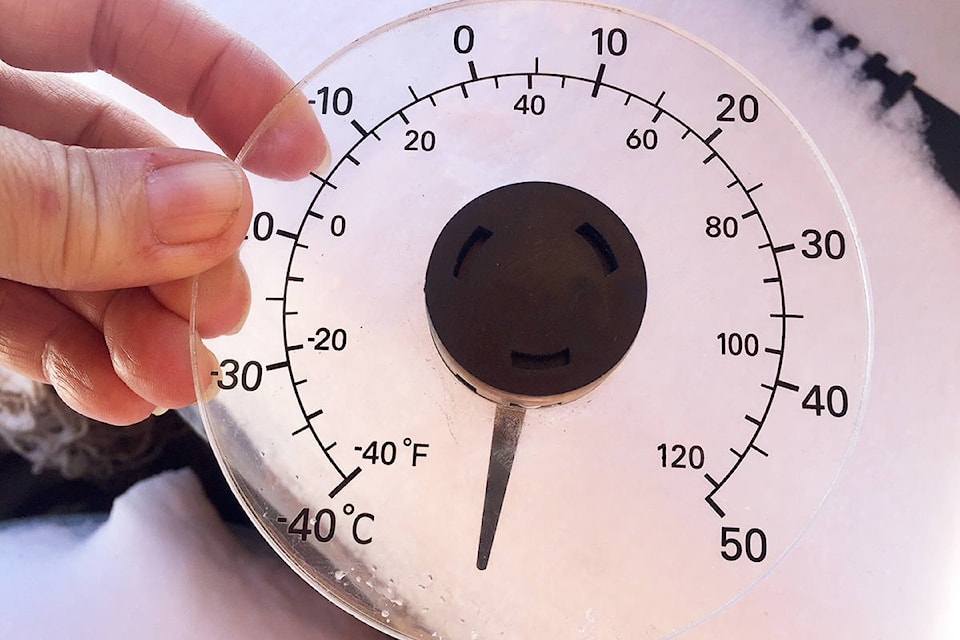Several areas in B.C.'s interior will experience extreme heat this week, according to a warning issued Monday by Environment Canada.
Temperatures will reach 35-37 C, while overnight lows will be around 18 C, from Tuesday to Thursday in the Okanagan Valley, Fraser Canyon, South Thompson, Kootenay Boundary and West Kootenay regions.
It has been an atypically cool and wet July throughout the Southern Interior, which has been spared the intense heat seen in much of North America, but that’s about to change, with the threat of intense lightning storms joining high temperatures, starting this week.
“There’s a heat wave coming; not a spectacular one, but the humidity is down,” says Joey Onley, who has been paying close attention to, and analyzing, weather throughout the Cariboo and Southern Interior since 2014. He has been fascinated with meteorology since he was a boy growing up in Southern Ontario, and felt the heat from a nearby lightning strike.
“That blew my little mind. We had tornadoes come through our region, and I saw a barn with the roof blown off. For a long time I was afraid of thunderstorms, but I forced myself, when I was young, to deal with that, and it turned into a wonderful obsession. I’m still at it.”
Onley has been fascinated by weather and climate since the 1980s, and says he has done all he can to increase his knowledge in the field to become as close to an expert as possible. He has lived in Wells for many years, and his Facebook page — Interior Weather & Wilderness Watchers — and YouTube channel (Joey Only — Cariboo Weather Dude) focus on the weather and climate of the Cariboo and Southern Interior, which he felt was largely being ignored.
“When it came to the Interior, no one was really forecasting publicly about it much. You’d get weather for Vancouver, Victoria, Kelowna, and Calgary, with this large area glossed over. It wasn’t great reporting, so I thought I’d start to change that somehow, and have something for people in the Interior.”
Looking at the last few days of July and into August, Onley says that the high heat and low humidity creates what is called a crossover situation.
“Fire likes to breathe dry air, and when the temperature is higher than the average humidity fire will burn more vigorously. We’re going to have very high temperatures into the 30s, and very low humidex values, in some cases below 30 per cent. If you add in winds of 30 km/h or more — 30/30/30 — you can get very explosive fire behaviour.”
Ironically, the wetter than usual July could make things worse going forward, given that vegetation is currently taller and more plentiful than usual.
“One thing that works against us is that things are so green, so moist. When the heat starts sucking moisture up it creates the conditions for lightning storms, and it dries the fine fuels.
“There could be multiple days of intense lightning activity happening while we’re in a crossover condition, up and down the province. We’re about to come into the first wildfire challenge of the summer, when resources may not be able to keep up with how many new starts there are, or with the behaviour of fires that have already started.”
He notes that he tries to be as reasonable as he can in delivering a forecast. “I’m not trying to be alarmist, but I have to be honest. If it’s any more than seven days out I’m hesitant to have a solid opinion, but there’s a large low pressure system from the south bringing the heat, and one dug in in the Gulf of Alaska, and that counterclockwise motion is going to bring the hot weather up.”
Onley says that the message going forward is that people need to be aware — mentally, emotionally, and physically — that with the hot weather comes the danger of fire, and prepare for it.
“We need to be in a place where we stop being a victim. We have to have a war-like attitude, preparation, hardness in a sense. When the fire started in Wells last year people were afraid, but what good does that do?”
It was in 2017 that Onley first saw a big shift in terms of thunderstorm activity. Up until then he says he saw some great thunderstorms in B.C., but the rate and spread has now changed.
“Widespread lightning storms weren’t a thing when I first came here, but I’ve seen a complete change in that regard. Now we have consistently widespread, highly volatile systems that produce thunderstorms that look like they belong more in the prairies.
“People need to fight, and have knowledge and information. It’s something we need to deal with now as our new reality.”
Interior Health said in a statement that the provincial government has not declare an extreme heat emergency, but that the temperatures will be dangerous for seniors, infants and children, pregnant women, residents with chronic health conditions and mental illnesses, people who work outside, or those who are unhoused or socially isolated.
Residents experiencing health conditions related to the heat should call 911, or for less urgent concerns contact HealthLinkBC at 811 and ask to speak with a nurse. Urgent care centres or clinics are also open if they can be accessed safely.
For more information on how to cope with extreme heat, visit .
— with a file from the Nelson Star



